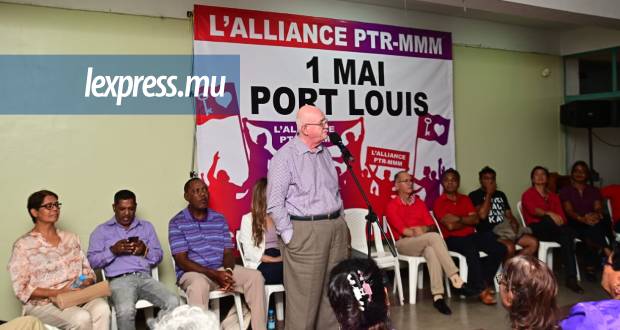Publicité
Electoral reform: Could the cure be worse ?
Par
Partager cet article
Electoral reform: Could the cure be worse ?


1. One great confusion, two major risks
The country is being surreptitiously and parsimoniously fed on the architecture of the proposed electoral reforms. This has ignited the rumour mill with many trying to second guess its undisclosed content. While some of the recommendations appear straightforward – 63 First Past the Post (FPTP) and 12 Proportional Representation (PR) seats, 30% of female candidates –, there is significant ambiguity on the third pillar which deals with the replacement of the Best Loser seats (number of such seats, its method of allocation and the basis of appointment by party leaders after elections).
It is also unclear how the PR seats will be apportioned and what will be the threshold for eligibility to such seats. This bewilderment is augmented by the fact that there has been no prior discussion with other parties with a view to reaching a national consensus on such a divisive subject. The report is simply Government position on electoral reform. Such an approach carries two important risks. First is the risk of perceived partisanship with both tactical consideration and strategic calculation. This could lead to partisan politics being allowed to choose a new voting system.
Second, political actors, however well intentioned, do not always have all the expert knowledge and the information to fully grasp all the consequences, ramifications and complicated algorithms of different electoral systems. Worse, very often they also do not know what they do not know. This explains why independent experts – either academicians, electoral practitioners or constitutionalists – have been appointed in the past to impartially advise on the stability, fairness and inclusion of proposed changes to our electoral system.
2. Have three key questions been adequately, fairly and convincingly answered?
In spite of these drawbacks, the report would fulfil its mission if it were to adequately, fairly and convincingly address three fundamental issues raised since a very long time on the shortcomings of our voting system. More specifically, we should evaluate whether the report recommends innovative, concrete and viable solutions to the following key questions:
i) The first relates to the inequity of the FPTP in terms of the discrepancy that exists between votes polled and seats obtained. Sachs, Tendon and Ahnee summarised this anomaly very aptly in their 2001 report.
There was unanimity that the FPTP system in the three member constituencies frequently produced results which were grossly disproportionate to the share of votes obtained by the different parties. At times, although obtaining a substantial vote, the Opposition was either completely or nearly completely eliminated. Thus, in 1982 and in 1995, the result was 60-0, while in 1991 and the year 2000, the presence of the Opposition barely reached symbolical levels. The purpose of introducing proportionality into the system was accordingly to correct the inordinate imbalances created by FPTP.
Do the proposals of the Ministerial Committee correct the inordinate imbalance of the FPTP? Or would the recommendations only lead to token and symbolical representation without remedying the extreme disproportionality between votes and seats?
ii) Second, would the policy of Government to abolish the community classification of the population and the new dispensation to replace the current Best Loser System (BLS) meet the requirements of the Constitution for “a fair and adequate representation” to reflect the plurality and diversity of the country? Or is the alternative proposed worse than the current inclusion and representation of the different groups? Put simply is the remedy worse than the ailment and are there unintended consequences on “socio-demographic inclusion and fairness”?
iii)As women are chronically, structurally and significantly discriminated in political participation and parliamentary and Ministerial representation, do the measures of the report go far enough to provide for gender equality and women’s political empowerment? To paraphrase Prime Minister Trudeau of Canada, would they deliver on a Parliament and a Government that “should look more like the country it serves because we are in 2018 and 50.6% of Mauritius are women?” Are women being short-changed or should they be content with what is being proposed simply because it is an improvement on the endemic absence of their voice in politics?
3. Framework for evaluating whether the three tasks have been well accomplished
The litmus test to judge the efficacy of the recommendations is a simple one which is based on international best practices in terms of evaluative criteria:
i) If the new formula reduces the “inordinate imbalances” between seats obtained and votes polled and ensures a reasonable share of seats to unsuccessful parties that have polled a relatively important share of votes, then the reform will meet the “party fairness” test. However, if the number of seats accruing to unsuccessful parties with a sizeable vote share is still symbolical and does not reflect the parties’ support among voters, then the reform is deemed to be a failure.
One hopes that Government has not taken three years to produce a formula that is worse than what has already been rejected by independent committees in the past. It must be pointed out that Sachs, Tendon and Ahnee thoroughly appraised five forms of PR in 2001 and specifically dismissed one formula (the infamous Sachs A) that it considered deeply flawed as it would not “correct the inordinate imbalances created by FPTP”.
Professor Chu of Singapore University also flatly turned down that same PR mode as “it highlights the impotence of parallel PR to tone down the excess of FPTP attribution” and “it is akin to a dose of panadol to cure cancer”.
The Select Committee chaired by Collendavelloo delivered a scathing indictment of the same parallel method of allocating PR seats. It posited that:
“The cohesive and forceful arguments put forward by Sachs should be sufficient to dispose of the parallel system proposed under this alternative. Mauritius must decide whether it wishes to have a stable Government with fair representation or whether it wants to perpetuate the present system with just a token representation. The people want to see their votes represented in Parliament.”
If Sachs, Chu and Collendavelloo did not find 30 PR seats apportioned by the parallel mode (Sachs A) effective to bridge the gap between votes and seats, one wonders how Government seriously and honestly believes that 12 PR seats allotted by the same Sachs A method will “correct the inordinate imbalances created by FPTP”? That would be a huge anti-climax after three years of deliberation. And we would be back to where we were in 2002.
ii) There are two intertwined challenges with respect to the pronouncements and recommendations of the UNHRC. First is the choice between an update of the 1972 population census and the adoption of a non-communitybased electoral system. I fully endorse the view that the country should not have a new census for that specific purpose as it will open up a Pandora’s box with a floodgate of requests for separate identities. However and probably much more important is to evolve toward a replacement of the BLS that will continue to ensure “a fair and adequate representation” of all the components of a diverse and plural Mauritius. We have three sets of statistics that are available to undertake an exercise to ascertain whether inclusion and diversity will progress or regress with the recommendations of Government.
Very few assumptions are required to have a simple algorithm predict what is the likely outturn of the new Assembly. Clearly, some form of PR can achieve a fair reflection of such diversity while others are likely to worsen the representation of some groups. In which category does the proposal of Government belong to?
iii) Should the reform necessarily pass the gender test simply as a result of providing for at least 30% of all FPTP candidates to be women? While 30% in one specific area of participation and representation is certainly better that the current dismal rate of 11% of MPs, evidence across the world and new thresholds by international and regional organisations strongly recommend that gender fairness must be deeper and wider. Is Mauritius condemned to always run behind missed targets? We widely missed the objective set by the UN to reach 35% of women in political decision making by 2005.
Now, SADC has a threshold of at least 50% of decision making positions in the public and private sectors to be held by women by 2015. And we are in 2018. We should catch up much faster.Would the 30% of all candidates deliver close to 30% of elected female MPs or are they being tricked as many may be fielded in non-winnable constituencies? Why don’t we simply embrace what exists for Municipal elections with at least one female candidate per ward? And should gender fairness, parity and representation be limited exclusively to Parliamentary presence or should it be extended to all decision making bodies, especially the ones where policies are shaped? Basically to reflect what Mauritius is.
4. Other issues to be resolved
While the three challenges mentioned above are absolutely pivotal in the electoral reform agenda, there are other issues that have been brought to the fore even if they are not strictly connected to the reform of the voting formula itself. It is plain that these issues are not pertinent to the reform of the FPTP, the introduction of a dose of PR and the necessity to provide a response to the UNHRC on the mandatory declaration of a candidate’s community to stand at General elections. These are as follows:
(i) financing of political parties by the State and the formula to share the earmarked amount, the conditions to access such financial resources, the restrictions on private sources of funds and the need for transparency and accountability of political parties;
(ii) policy on anti-defection to bring more ethical conduct and behaviour in politics;
(iii) widening of the powers of the Electoral Supervisory Commission to reinforce the guarantees of free and fair elections and ensure a level playing field for competing parties.
To put it squarely, it is very likely to address these three concerns outside the reform of the voting formula. It is therefore highly debatable whether their inclusion on the already divisive agenda will help or hinder progress. While certainly not underestimating the relevance and importance of these three issues, it seems to me that the resolution of “party fairness, rainbow inclusion and gender equality” should be the focal point of discussion to reach a national consensus.
5. Concluding note
There is need to concentrate time, effort and energy on the three key issues that will affect the electoral formula. And ask three plain questions. First, would the proposals of Government correct the inordinate imbalances created by FPTP in terms of the disparity between votes polled and seats obtained? Second, would the recommendations to replace the BLS improve or worsen the diversity of representation, inclusion and fairness of the different colours of our rainbow nation? Third, is the quest for women equality and parity limited to an overall 30% candidacies or should it be wider and deeper so that democracy truly delivers for the 50.6% of the population that remains structurally underrepresented in the highest political decision-making process?
We will have the answers to these three questions once the report is released to the public! Until then, the rumour mill will be in overdrive.
Publicité
Les plus récents






